
Whether your eyeglasses are an accessory, a visual aid, or both, it's beneficial to learn their various parts. Eyeglass repairs, replacements and adjustments are more easily accomplished when you know how your eyeglass frames work. You can simplify eyeglass frame purchasing by knowing where to find the size, color and model of the frame.
Parts
Hold the frame so it is facing you. The front of the frame can be made out of a metal, plastic or both. The area surrounding the lens is called the rim. Some frames have full rims, while others can have only a top rim, these are called sem-rimless. Semi-rimless frames hold the lenses in place with a transparent cord.
Locate the two parts of your frame that rest behind your ears. These are the temples. The ends of the temples can be bent at a 45 degree angle to rest comfortably behind your ear. The endpieces connect the temples connect to the rim of the frame. Occasionally, with metal frames, the ends are covered with tightly fitted plastic, called earpieces.
Locate the area where the frame rests on your nose. These two pads are called nose pads, and they connect the rims of the frame. The nose pads are attached to the frame by pad arms. Some frames, like plastic frames, do not have nose pads. The area that extends over the nose is called the bridge.
Model, Style, Color and Size
Find a set of letters, numbers or words printed on the inside of the temples. Some are located near the lenses, while others are printed on the earpieces.
Read the first set of words, letters and/or numbers. This usually identifies the name of the frame, followed by numbers which are the model numbers. This is important to know if you need to search for the frame in several locations or if you need to replace parts of your frame.
Locate the next set of numbers and/or letters. This is the color of your frame, as the manufacturer or store would identify it.
Read the last three sets of numbers. The first number is the eye size, followed by the bridge size. Eye size describes the size of the lenses in millimeters. The bridge size is the centimeter length between the lenses. These numbers are always single or double digits. The last three-digit number is the centimeter length of the temple, which extends from the hinge to the curved part that lays over the ear.
Related Articles

How Can I Tell What Model Oakley Radars ...

How to Remove the Lens From Plastic ...
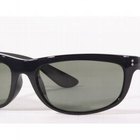
How to Tell Authentic Locs Sunglasses ...

How to Make Croakies Fit
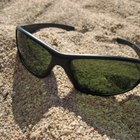
How to Adjust Maui Jim Plastic Frames
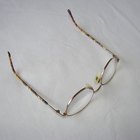
How to Adjust Flexon Frames

How to Clean an Electric Self Shaver

How to Choose the Size of Ray-Ban ...

Directions on Changing Bolle Lenses

How do I Size Oakley Sunglasses?

How to Remove Ray Ban Lenses

How to Fix Transition Lenses

How to Change Oakley Lenses

How to Sterilize Eyeglasses
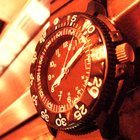
How to Check for an Original G-Shock
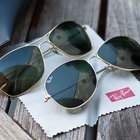
How to Clean Ray-Bans
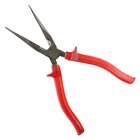
How do I Change the Battery in a Wenger ...

How to Straighten Metal Eyeglasses

How to Pluck Eyebrows for Beginners

How to Find a Prison Inmate in ...
References
Writer Bio
Mari Rose began professional writing in 2010. Her experience includes the topics of French language, political science, grant writing, studying/teaching abroad, travel, international relations and fashion. Working as an optician, Rose also has extensive experience and knowledge in the ophthalmic industry. She holds Bachelor of Arts degrees in French language and international studies, both from West Virginia University.
Photo Credits
Paul Tearle/Stockbyte/Getty Images